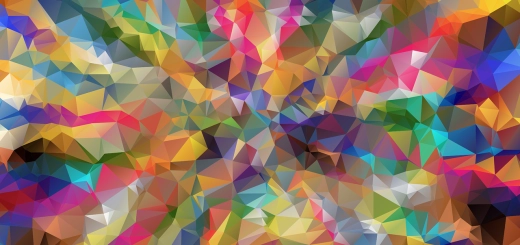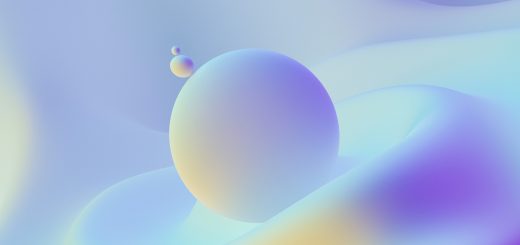Exploring the Mysterious World of Hybrid Animals

Looking for more amazing products? Check out our online store and explore our collection here! Happy shopping!
Before diving in, please note: This post is for informational purposes only. If you’d like to know more about how we approach topics, feel free to check out our friendly Disclaimer Page.
Hey there, amazing readers! 
We’re committed to delivering quality posts, and your support (even just sticking around despite the ads) means everything to us. So, bear with us, and thanks for helping us keep the good vibes rolling. Now, on to the fun stuff!
TRANSLATE BUTTON AT THE END OF THE ARTICLE
Hybrid animals have long captured the imagination of people worldwide, blending traits of two different species into a single, fascinating creature.
From the majestic liger to the elusive mule, hybrids often blur the lines of nature’s boundaries.
These extraordinary beings, whether born through natural circumstances or scientific intervention, teach us about genetics, evolution, and the possibilities within the animal kingdom.
Let’s dive into the intriguing world of hybrid animals, exploring how they come to exist, their unique characteristics, and the mysteries surrounding their existence.
What Are Hybrid Animals?
In simple terms, hybrid animals are the offspring of two distinct species.
For hybrids to form, the parent species must be closely related genetically—typically from the same genus.
Despite their differences, these species are capable of reproducing under the right conditions.
Common Types of Hybrids
Interspecies hybrids: Created from two different species within the same genus (e.g., lion and tiger).
Intrageneric hybrids: Result from the crossing of two genera, though these are much rarer due to genetic incompatibilities.
Hybrids often showcase unique traits inherited from both parents, giving them their distinct appearance and behaviors.
How Do Hybrid Animals Come Into Existence?
Hybridization can occur naturally in the wild or through human intervention, such as selective breeding or artificial insemination.
Natural Hybridization
In the wild, hybrids form when two species share overlapping territories and mating seasons.
Examples include:
Coywolves: A mix of coyotes and wolves found in North America.
Grolar bears: The offspring of polar bears and grizzly bears, typically seen in regions where their habitats overlap due to climate changes.
Human-Driven Hybridization
Humans have also played a role in creating hybrid animals, often for specific purposes such as agriculture, conservation, or scientific research.
Examples include:
Mules: A cross between a horse and a donkey, bred for their strength and endurance.
Zebroids: Zebra hybrids (e.g., zorses or zonkeys) bred for novelty or conservation efforts.
Notable Hybrid Animals
The world of hybrid animals is as diverse as it is fascinating.
Here are some of the most notable examples:
Liger
Parents: Male lion and female tiger.
Traits: The liger is the largest big cat in the world, often surpassing both parents in size.
It combines the social nature of lions with the swimming ability of tigers.
Tigon
Parents: Male tiger and female lion.
Traits: Smaller than ligers, tigons inherit traits like stripes from tigers and manes from lions.
Mule
Parents: Male donkey and female horse.
Traits: Known for their strength, stamina, and sure-footedness, mules are sterile due to differences in parental chromosome numbers.
Coywolf
Parents: Coyote and wolf.
Traits: Coywolves are highly adaptable and display behaviors and physical traits from both parent species, making them effective predators.
Discover "Dog Care: Learning How to Care for Your Furry Friend
"
Zorse
Parents: Zebra and horse.
Traits: Zorses inherit zebra stripes and the temperament of a horse, making them visually striking but challenging to train.
What Makes Hybrids Unique?
Hybrid animals often possess a mix of traits from both parent species, but they also come with distinct challenges and mysteries.
Physical Traits
Hybrids may exhibit a combination of:
Distinct markings or coloration (e.g., a liger’s faint stripes).
Size variations, often surpassing one or both parent species (as seen in ligers).
Unique structural features, such as a mule’s robust frame.
Behavioral Traits
Hybrids may inherit behaviors from both parents, creating unusual combinations:
Grolar bears display a mix of polar bear hunting skills and grizzly bear foraging habits.
Coywolves are highly social like wolves but adaptable to urban environments like coyotes.
Genetic Challenges
Many hybrids are sterile due to mismatched chromosome numbers between parent species (e.g., mules).
Genetic incompatibilities can lead to health issues or shorter lifespans in some hybrids.
The Role of Hybridization in Nature
Hybrid animals play a crucial role in understanding evolution and adaptation.
In some cases, hybrids may even contribute to the survival of a species by introducing genetic diversity.
Benefits of Hybridization
Increased adaptability: Hybrids can inherit traits that make them better suited to changing environments.
Genetic diversity: In some cases, hybridization introduces new genetic combinations that strengthen populations.
Conservation Challenges
While hybrids can be beneficial, they also pose challenges:
Threats to pure species: Hybridization can dilute the genetic purity of endangered species.
Conservation dilemmas: Should hybrids be protected or excluded from conservation efforts?
Ethical Considerations of Human-Driven Hybridization
Creating hybrids through human intervention raises important ethical questions.
While hybrid animals can serve valuable purposes, such as improving livestock or aiding research, there are concerns about animal welfare and ecological impact.
Key questions include:
Is it ethical to create hybrids purely for novelty or entertainment?
How do we ensure hybrids are cared for and not exploited?
The Fascination With Hybrids in Mythology and Pop Culture
Hybrid animals have fascinated humans for centuries, often appearing in myths, legends, and popular culture.
Mythological Hybrids
Griffins: Part eagle, part lion, symbolizing strength and wisdom.
Centaurs: Half-human, half-horse creatures from Greek mythology.
Chimeras: Creatures with body parts from multiple animals, often representing chaos or power.
Hybrids in Modern Media
From fantasy novels to blockbuster movies, hybrid creatures continue to captivate audiences, symbolizing the merging of the familiar and the extraordinary.
Conclusion
Hybrid animals are a testament to nature’s creativity and complexity.
Whether they occur naturally in the wild or result from human intervention, these creatures reveal the fascinating interplay of genetics, evolution, and adaptation.
As we continue to study and interact with hybrid animals, we gain a deeper understanding of the natural world—and our own role within it.
So, the next time you hear about a liger, coywolf, or zorse, take a moment to marvel at the incredible ways life finds expression across species boundaries.

The Enlightenment Journey is a remarkable collection of writings authored by a distinguished group of experts in the fields of spirituality, new age, and esoteric knowledge.
This anthology features a diverse assembly of well-experienced authors who bring their profound insights and credible perspectives to the forefront.
Each contributor possesses a wealth of knowledge and wisdom, making them authorities in their respective domains.
Together, they offer readers a transformative journey into the realms of spiritual growth, self-discovery, and esoteric enlightenment.
The Enlightenment Journey is a testament to the collective expertise of these luminaries, providing readers with a rich tapestry of ideas and information to illuminate their spiritual path.
Our Diverse Expertise
While our primary focus is on spirituality and esotericism, we are equally passionate about exploring a wide range of other topics and niches 

To ensure we provide the most accurate and valuable insights, we collaborate with trusted experts in their respective domains 
Our blog originally focused on spirituality and metaphysics, but we’ve since expanded to cover a wide range of niches. Don’t worry—we continue to publish a lot of articles on spirituality! Frequently visit our blog to explore our diverse content and stay tuned for more insightful reads.
Hey there, amazing reader! 
Check out our store here and take a peek at some of our featured products below! Thanks for being awesome!










